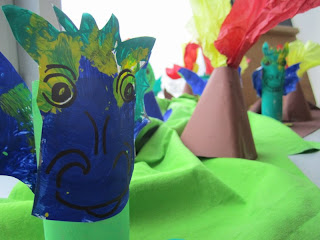Any idea what this is?
No, it's not art, for a change.
It's plastic. This is all the plastic waste we had during the past week. I wanted to do this as an experiment and to see where we are still using plastic. There are:
3 Milkbottles
2 juice Pet bottles
2 bags from pasta and such
1 container for olives
1 envelope with plastic pouch glued on
1 broken USB cable
wrappings from tofu, fabric color and choccolate
bits and pieces like bottletops, winecorks, plastic-covered paper from the back of stickers.
plastic parcel filling
I think for a one week entire plastic waste of two people this is not too bad. But I'm quite sure we can do better. For example, next time we need a new motherboard, we're gonna pick it up at the store instead of having it sent.
This mini project was a great way to see where our regular plastic waste comes from. It is mainly bottles for orange juice and milk, and some packaging for stuff like cheese, tofu, pasta and such.
Since we stopped using plastic bags to put our vegetables and fruits in we have cut down our waste by a significant amount.
But why should we avoid plastic waste?
Plastic is made from non-renewable resources. This means, making plastic hollows out the substance of our planet.
Plastic in the garbage in addition to the usual problems is bad because it contains many additives that are toxic. They drain into the environment or escape as fumes when burned.
(And yes, some of these can actually get into your food that you keep wrapped in plastic/store/heat in plastic containers!)
Plastic is not really recyclable. Even though most plastic has the arrow-logo printed on, this is only used to indicate the type of plastic and how to depose it. IT IS NOT SAYING THAT THIS ITEM IS RECYCLABLE.
If you recycle plastic containers, most of it will be downcycled, that means, used to make items that cannot be recycled anymore. This means it only takes longer until it goes to the dump. Only a minimal percentage is used to actually make new containers. So every time you buy plastic, you encourage plastic making.
The most cruel thing: Most kinds of plastic are forever. They are not bio-degradable. A plastic bag takes up to a 1000 years to break down, and evern then it just turns into plastic dust, but it is still there, and no being on this earth can digest it, however small the pieces are. This is why tons of animals in our oceans suffocate or die from absorbing the plastic that is toxic for them.
The plastic ends up in the oceans where, driven into one place by the currents, it forms an area called the
Great Pacific Garbage Patch.
Gods. We are doing this! Let's stop it!
If you got interested in the topic and wanna read some more, there's lots of pages out there that give detailed information (remember to check who the author is - it is a much fought-over topic and not all sources are reliable or objective). One site I quite like for inspiratin is
My plastic-free Life.
We're currently rethinking our shopping habits here at the bubble, and plactic will certainly be a point in these considerations. Stay tuned!




















































